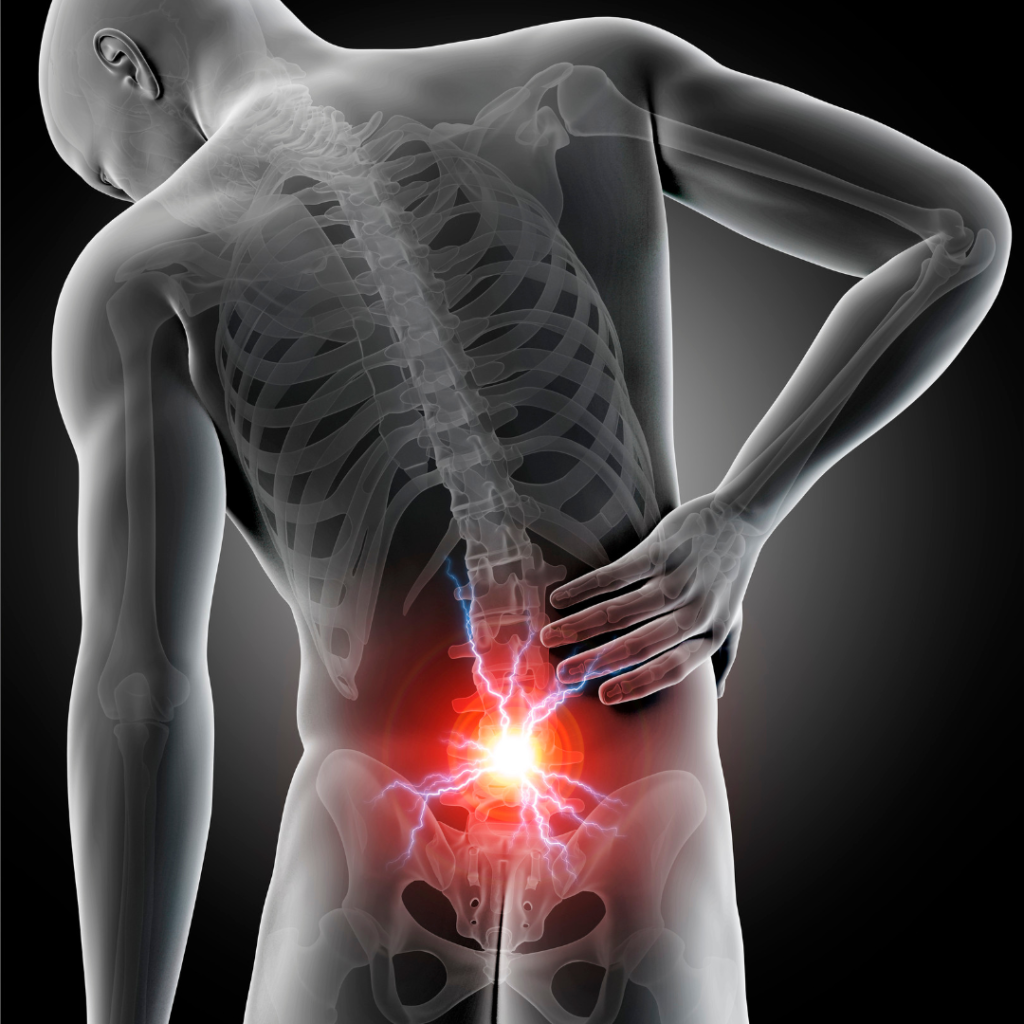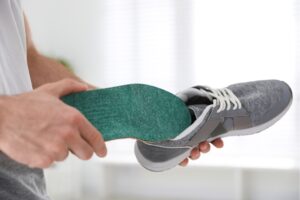EHP Clinic offers chiropractic, physiotherapy, kinesiology, personal training, massage therapy and many more.

Understanding Low Back Pain
Low back pain, being a common cause of mechanical issues within the body as well with soft-tissue injuries, can have side affects that may radiate to surrounding muscles around its origin. Stabbing, burning, aching, and waves of sharp pain are all common side effects that relate to having lower back pain. To simplify the specific pain, two different types of back pain, acute and chronic back pain have their own role on how to approach and treat it. To understand it further, the National Institute of Neurological Disorders and Stoke has stated the differences between these two pains:
- “Acute, or short-term back pain lasts a few days to a few weeks. Most low back pain is acute. It tends to resolve on its own within a few days with self-care and there is no residual loss of function. In some cases a few months are required for the symptoms to disappear.”
- “Chronic back pain is defined as pain that continues for 12 weeks or longer, even after an initial injury or underlying cause of acute low back pain has been treated. About 20 percent of people affected by acute low back pain develop chronic low back pain with persistent symptoms at one year. Even if pain persists, it does not always mean there is a medically serious underlying cause or one that can be easily identified and treated. In some cases, treatment successfully relieves chronic low back pain, but in other cases pain continues despite medical and surgical treatment.”
“Low Back Pain Fact Sheet.” National Institute of Neurological Disorders and Stroke, U.S. Department of Health and Human Services, https://www.ninds.nih.gov/Disorders/Patient-Caregiver-Education/Fact-Sheets/Low-Back-Pain-Fact-Sheet.
If you experience low back pain, Etobicoke High Performance Health Clinic practitioners; physiotherapists, chiropractors, massage therapist and personal trainers work together to create a strategy including soft tissue therapy, and exercise rehabilitation to help alleviate your pain. Our team will help you increase mobility, strengthen, and increase range of motion (ROM) to achieve optimal recovery results.
Common Risk Factors
- Age:
- The ages of 30-50 are common ages where people tend to experience severe back pain. As aging occurs, one is more prone to experiencing a reduction in bone strength, elasticity within the muscles, reduction of healthy fluidity around the joints, specifically towards the intervertebral discs .
- Job-related factors:
- If your jobs is associated with heavy loads, lifting, pushing, pulling, bending over, or rotation of the hip, can all have an impact on the lower back. Surprisingly working at a stationary desk can also cause your hip flexors to tighten and shorten over time causing poor mobility and posture. An ergonomic chair is recommend in preventing further injuries during a prolonged period of time.
- Genetics:
- Many studies have found that genetics have been a role in lumbar disc disease causing that of degeneration or herniated intervertebral discs within the lumbar of the lower back.
- Fitness Level:
- Keeping up to date with your fitness is an important part of healthy living to improve cardiovascular health, respiratory, musculoskeletal, and overall health. A lack of exercise for a period of time, specific to the individual, can lead to weaker, unstable, quickly fatiguable back muscles. Therefore, with frequent exercise, one will experience a reduction in pain and a stiff back muscles.
- Smoking:
- Vaping and smoking, specifically nicotine-induced pain relief, is a frequent activity one may participate in to alleviate pain. However, many studies have found that smoking can actually restrict oxygen, nutrients and blood flow causing a degeneration in the surrounding tissues.
Modern Science Based Treatments
- Cold or Hot Packs
- Light exercise/ Rehabilitation
- Chiropractic adjustment
- Acupuncture
- Exercise and Flexibility
- Transcutaneous electrical nerve stimulation
Evidence Based Studies to Approach Low Back Pain
Evaluation and treatment of low back pain: an evidence-based approach to clinical care.
Evidence showed that individuals with low back pain symptoms which don’t diminish or improve within a 2-to-4-week period. Should be referred to a physical examination for appropriate attention and recovery.
Atlas, Steven J, and Rachel A Nardin. “Evaluation and Treatment of Low Back Pain: An Evidence-Based Approach to Clinical Care.” Muscle & Nerve, U.S. National Library of Medicine, 27 Mar. 2003, https://pubmed.ncbi.nlm.nih.gov/12635113/.
Effects of muscular stretching and segmental stabilization on functional disability and pain in patients with chronic low back pain: a randomized controlled trial
Within this study, results concluded that workouts that focused on core exercises for stabilization such as the transverse abdominis and the lumbar multifidus proved positive results. Stretching procedures for the surrounding muscles, as in the hamstrings and erector spinae can be beneficial. All methods showed improvements as well with reducing pain and increasing mobility.
Fábio , França Renovato, et al. “Effects of Muscular Stretching and Segmental Stabilization on Functional Disability and Pain in Patients with Chronic Low Back Pain: A Randomized, Controlled Trial.” Journal of Manipulative and Physiological Therapeutics, U.S. National Library of Medicine, 1 May 2012, https://pubmed.ncbi.nlm.nih.gov/22632587/.
Exercise therapy for treatment of non-specific low back pain
Adults who suffer from chronic low back pain seem to have a positive outcome when they focus on exercise therapy, as it may help decrease pain levels and improve mobility. With individuals who suffer from subacute lower back pain, performing a graded exercise program may improve subacute lower back pain.
J, Hayden A, et al. “Exercise Therapy for Treatment of Non-Specific Low Back Pain.” The Cochrane Database of Systematic Reviews, U.S. National Library of Medicine, 20 July 2005, https://pubmed.ncbi.nlm.nih.gov/16034851/.
For More Information
EHP Clinic’s team is ready to help you! Call our clinic for more information or to book your first consultation now below!


